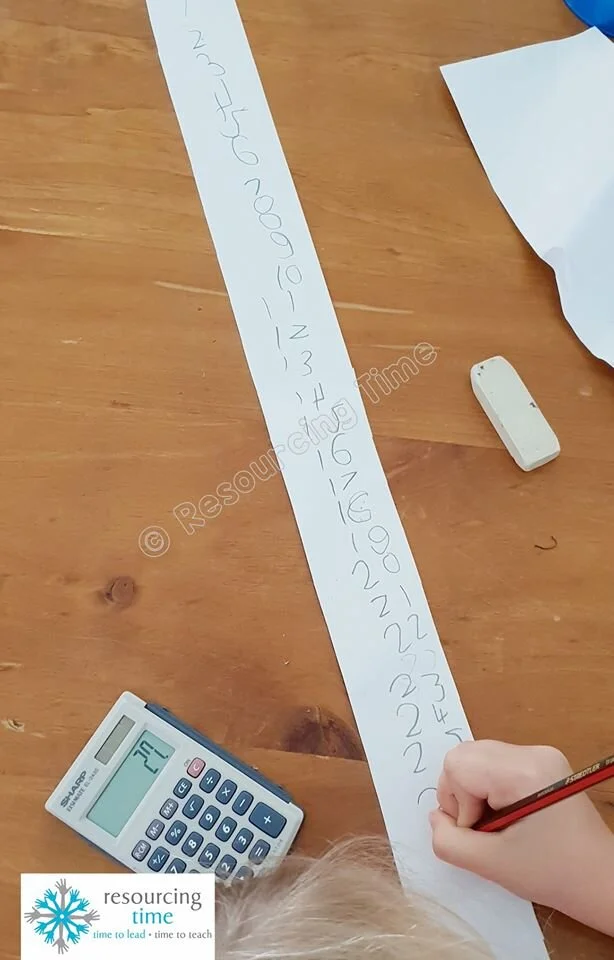Learning Number Patterns Using the Constant Function
As well as learning about properties of number such as a number can be thought of in parts, place value etc, students also need to identify the patterns in the way we say, read and write numbers.
It is because of these patterns that we can often predict how to say, read and write a number even if we have never heard it. (There is actually a sequence to learning the patterns but more on that later!)
I had my 5 year old develop a number scroll using the constant function on a calculator. This is also an activity I have done with classes and small groups. Because she can orally count beyond 100, my focus was on writing (identifying the pattern) in the teens, writing decades to 40 and repeating the 1 to 9 pattern within each decade. I stopped at 40 only because she was becoming restless!
The constant function on a calculator is very handy in helping students identifying the counting patterns and also skip counting (Year 1 and 2 standard). You also don't have to start at the number 1!
It may take a few paragraphs to explain this activity so bear with me!
Prior to starting, my daughter and I used her 1 to 20 number line and some counters and together we identified that when you count in order you are adding one at a time, or it is one more than the previous number. I gave her a calculator and let her play on it first. (This is actually important in keeping focus later when the learning starts!)
Because she is in Pre-Primary (Foundation) I entered the number 1, asked her how many more to get to 2, then inputted + 1 =. On the screen the number 2 comes up. Using a long strip of paper (I just cut up an A4 sheet and glued the ends together) she wrote the number 1 at the top, then 2. She then pressed the = sign again and 3 came up. (This is where the constant function comes in - she doesn't have keep pressing + 1, only =. Although, some calculators need you you to do + 1 twice before you can use the constant function.)
Each time the number changed on the calculator screen, she wrote it on her scroll.
When key changes happened - such as when 9 became 10, when 19 became 20, when 29 became 30 I asked her what changed in the number and we spoke about the changes. I stopped her at 39 and asked her to predict what the next number would be and what it would look like. Based on previous questions and discussion, she was able to correctly predict that 39 would change to 40, and the 9 would change to a 0 and the 3 would change to a 4. I also did this with every number in the teens - what has changed? What has stayed the same? (Identifying the 1 to 9 pattern.)
Because she is Pre-Primary (Foundation) at no point did I talk about place value (ones and tens place) with her. This is far too abstract at this level and she has lots to do with breaking smaller numbers up first. And my focus was on reading writing the numbers for this activity.
We also identified one digit numbers (1 to 9) and two digit numbers (11 to 40). I used the term 'digit' with her as it is important to use correct mathematical terminology - so, the number is 11 but the digits are 1 and 1.

